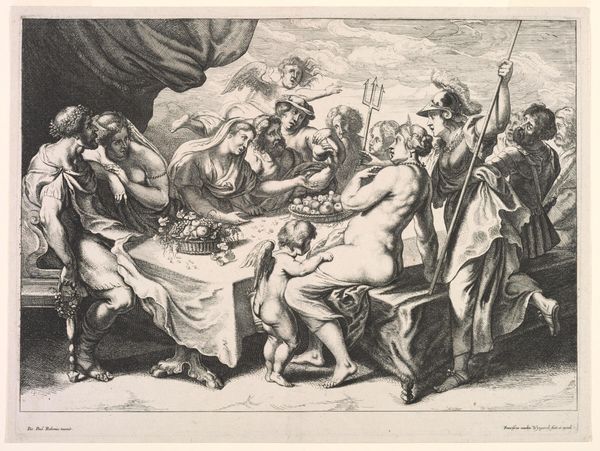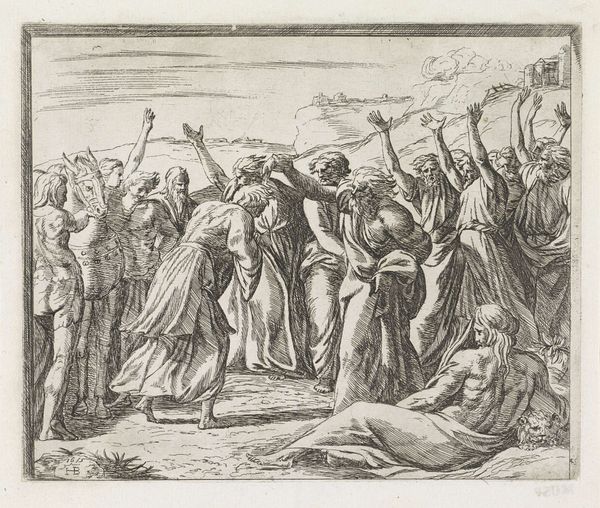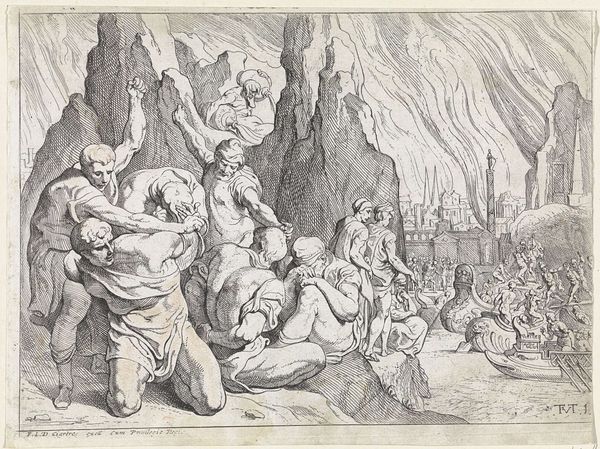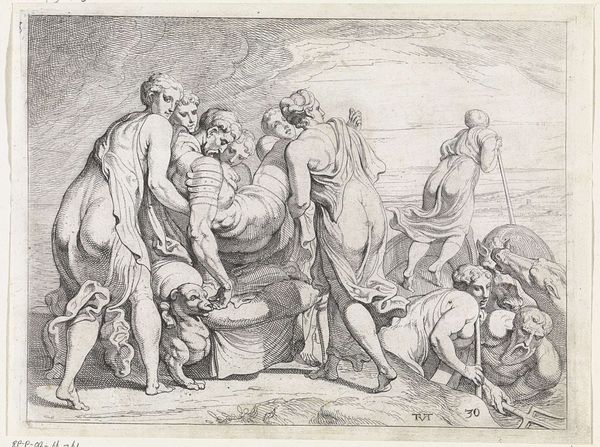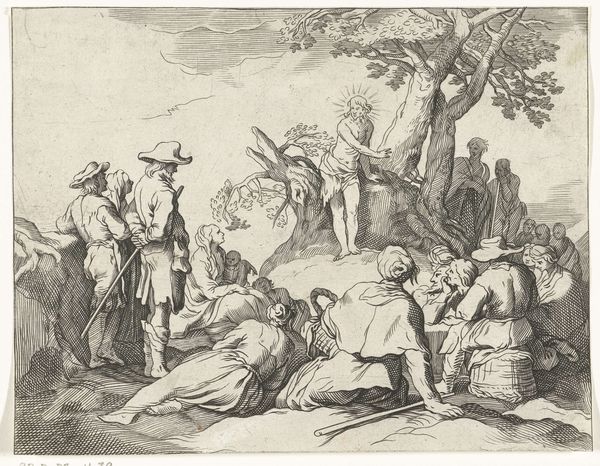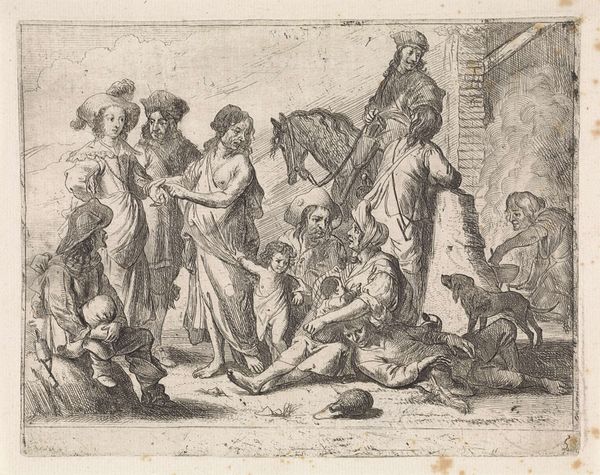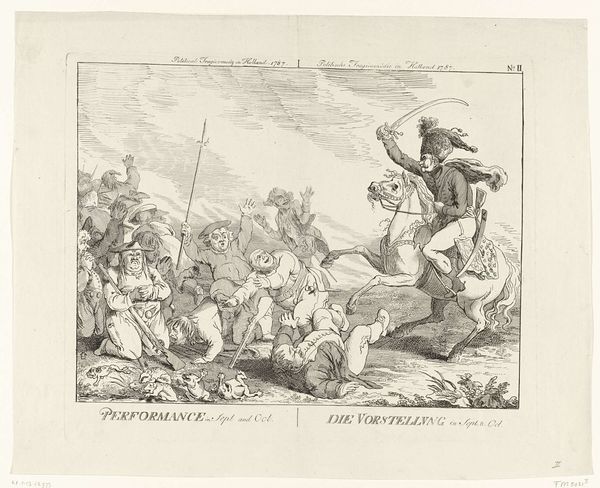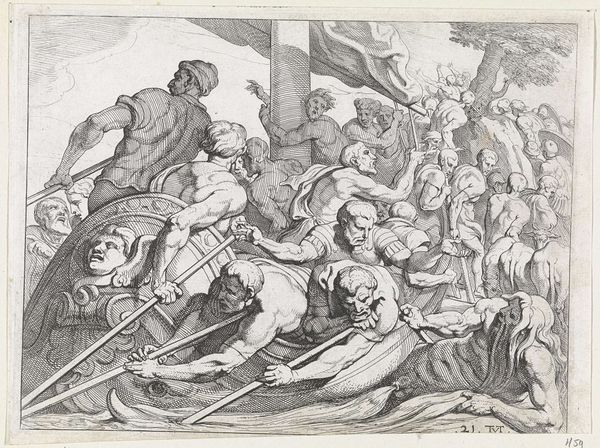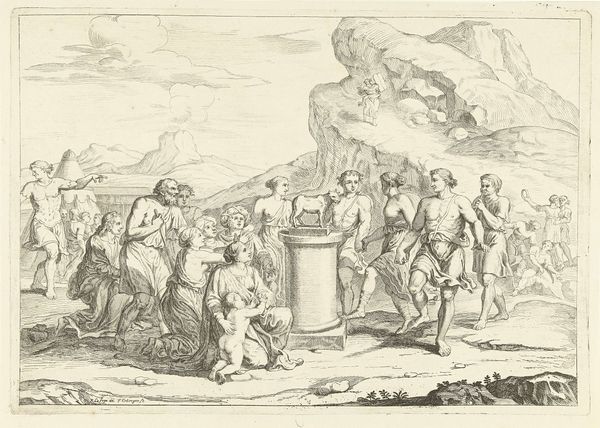
print, engraving
#
narrative-art
#
baroque
# print
#
landscape
#
classical-realism
#
figuration
#
history-painting
#
engraving
Dimensions: height 435 mm, width 305 mm
Copyright: Rijks Museum: Open Domain
Curator: Good morning, I’m so glad we can spend some time with this incredible print currently housed at the Rijksmuseum, "Moses Striking Water from the Rock". It was realized sometime between 1652 and 1707 by Franz Ertinger. What's grabbing you first about this engraving? Editor: The immediate emotional tenor here is intense. Look at the desperation etched into each figure's posture and the barren landscape that seems to amplify their suffering! Curator: Right! The baroque drama is pretty clear to see. The scene itself depicts a pivotal moment from the Book of Exodus, where Moses, under divine instruction, strikes a rock with his staff to provide water for the Israelites in the desert. It's such a vivid scene, but look closer - what do you see in terms of societal dynamics represented in this work? Editor: Well, notice how Ertinger chooses to portray Moses: commanding, but also a mediator between the divine and the desperate. But let’s think critically here, it's about the politics of desperation—who gets to decide where salvation comes from, and who is left languishing in the dust? We can use tools from intersectionality, power structures, the haves and have-nots… Curator: True. There is something profoundly universal here about leadership, faith, and, well, basic survival. But looking at this as a creative, I notice that Ertinger captured light and movement remarkably well in this engraving, especially with the cascading water. Also notice how some individuals in the scene almost seem serene— perhaps reflective of blind faith… it's quite a stark contrast to the desperation you pointed out earlier! Editor: Definitely! And I am interested to discuss this "faith" more closely. Because such historical moments—particularly biblical narratives—can and often have been, used to legitimize oppressive systems. In the past as in the present. Curator: An excellent and sobering thought. There's something about how Ertinger depicted this legendary event that transcends the strictly religious; it is a story about leadership, survival, divine providence. Editor: Perhaps... What is really interesting, in the final estimation, is reflecting upon whose stories and perspectives this particular engraving seeks to emphasize or omit, thereby shaping its legacy.
Comments
No comments
Be the first to comment and join the conversation on the ultimate creative platform.

